#hudson bay wolves
Text
I love being in a non human relationship!!!

this is literally me and him!

its great, i can really be myself around him. he's really my soulmate. we can do anything with eachother and it could never be considered weird because we're just two wolves in love!!!! I LOVE BEING NON HUMAN!!!!!!!

#alterhuman#nonhuman#caninekin#holothere#physically nonhuman#hudson bay wolf#white wolf#black wolf#2 wolves inlove
8 notes
·
View notes
Text

CANADIAN WOLF
Canis Lupus Hudsonicus
Prepared 2010, Switzerland
109 × 89 × 48 cm
A CITES certificate is required for the export of this object. The buyer is responsible for obtaining this document. Shipping abroad is not possible through Koller Auctions. Please contact the department for further information.
The long-legged Hudson Bay wolf is sometimes referred to as the tundra wolf or Canadian wolf. Although in appearance similar to the Arctic wolves, it forms a distinct subspecies within the canine family, Canidae. As the name suggests, this wolf species lives in the grassland and forest as well as in the cold steppe north and west of the Hudson Bay in Canada. The beige to light grey, sometimes nearly white-coloured animals live together in small packs. Their main food is the North American reindeer, which they follow in autumn to warmer areas.
Because of its remarkable hunting abilities, this wolf is revered by the northern First Nations, the indigenous American peoples who live in what is now Canada. Its intelligence and communication skills are also legendary, which is why masks and figures depicting wolves were popular with warriors. In the legends and myths of these tribes, wolves, like bears, are generally considered closely related to humans and are often depicted as their protectors.
This majestic animal presented here has the characteristic light coat of this species, which contains beautiful fine traces of copper red. It was prepared by a Swiss taxidermist after its natural demise in a zoo.
Koller Auctions
18 notes
·
View notes
Text
Pokemon region themed after Canada with areas based on the territories, Hudson Bay, the Rockies, and the east coast provinces, canonically north of Unova
Red sands shore-style beach. CN Tower-like building. Skiing in the snowy mountains. Montreal-based city with older, more European looking buildings.
New pokemon based on caribou, inukshuk (think stonjourner), beaver (yes I know bibarel exists but MORE!), maple tree, totem pole, Canadian goose, loon...
If Galar hadn't already done legendary wolves I'd say that would be a perfect idea. Instead, the box legends could be bears with inspiration from indigenous people's art and stories (assuming it's done respectfully).
Canada has a lot of beautiful landscapes to draw inspiration from, not to mention iconic animals for new pokemon :]
24 notes
·
View notes
Note
Alaska is such a cool place for clans, mine come from BC though. Because I wanted my knock off river clan to swim in the ocean and constantly get into it with sea wolves haha
Ooh that would be a fun conflict. I’ve actually had these clans for a while and originally conceived of them being near the Hudson Bay, but I switched it when I visited alaska and got to actually see a place that work perfectly as a location lol
#it’s a lot easier for me to write about places when i’ve been there i can like. conceptualize it better#resurrection bay was perfect since its got the glacier the town and the ocean all smushed relatively close together#would love to hear more about your bc clans!#ask#the-greatest-being
14 notes
·
View notes
Text

#95 Larka
Book name: The Sight
Author: David Clement-Davies
I like her fine as a character but it always annoyed me so much that she's white. She's an Eurasian wolf, those aren't white. Maybe pale gray or cream at most. So idk I kinda cheated for her design and made her cream instead.
And before you go "oh she's white because of the Sight power", that doesn't work because Morgra and Fell also have it and it did not affect their coat color. Fell also by all logic probably shouldn't be black but it has been sighted a few rare times in Eurasian wolves. White just doesn't really occur. She's an Eurasian, not a Hudson Bay or an Arctic or a Tundra.
#xenofiction#the sight#fell#david clement-davies#larka#wolf#wolves#gray wolf#grey wolf#art#digital art#artists on tumblr#xenofiction design project
5 notes
·
View notes
Note
opinion on wolves?
Wolves... Some of my favourite animals. Absolutely wonderful critters; I love talking to their keepers, at zoos. It's a shame that there isn't enough uninhabited spaces left in the U.K, to realistically reintroduce the wolf to our country. But, hey, the lynx thing is going well!
Beautiful creatures. Did you know that there is a subspecies of grey wolf from Canada with webbed toes, called the Hudson Bay Wolf? I was lucky enough to catch the keeper of a family of them at a zoo, some six years ago, and I had gotten to see it for myself. Supposedly, all wolves have webbed paws to some extent - but I'm not a wolf expert; in my time working with animals, I mostly did hedgehogs, foxes, otters, and badgers - but I did do a research paper on chimpanzees, and naked mole rats, so I also claim some knowledge there ^^ but wolves, what I know on wolves, is what I have picked up from asking keepers alone!
3 notes
·
View notes
Text
Part 3/4 continued from the previous post. Due to text block restrictions I am forced to do divide my post like this
⦁ Hansel & Gretel: Witch Hunters 2013 (A twist on the old tale of Hansel and Gretel)
⦁ Ninja Assassin 2009 (I was watching this before I even knew Jung Ji-Hoon aka Rain was a k-pop idol and I just thought the ninjas were so badass)
⦁ The Orphan 2009 (Isabelle Fuhrman the actress who plays the orphan was phenomenal in this role, very creepy)
⦁ The Island 2005 (An action/sci-fi film from Michael Bay starring actors Ewan McGregor and Scarlett Johansson)
⦁ Beyond Re-animator 2003 (It's so bad it's good! There are two previous films in this series adapted from H.P Lovecraft. I'd suggest you start there. This won't be everyone's cup of tea, you will either love or hate it)
⦁ Aquamarine 2006 (I watched this in the cinema with a group of friends in my school days and it was such a fun time)
⦁ This Means War 2012 (I just loved watching Tom Hardy & Chris Pine together)
⦁ How To Lose a Guy in 10 Days 2003 (The chemistry between Kate Hudson and Matthew McConaughey was so good to watch)
⦁ Rush Hour 1988 1-3 (I cannot believe this movie is already 36 years old! Jackie Chan and Chris Tucker were so funny)
⦁ The Mask 1994 (A looney comedy starring Jim Carrey and Cameron Diaz)
⦁ Shallow Hall 2001 (A movie that teaches us that beauty is more than just looks)
⦁ Two Can Play That Game 2001 (All the ladies need to watch this one, but I'm sure the men will enjoy it too)
⦁ Boat Trip 2002 (A fun comedy starring Cuba Gooding Jr and Roselyn Sánchez. I've got to say this one is definitely not kid friendly)
⦁ King Kong 2005 (The Visuals were stunning! This movie was made by Peter Jackson the same man who gave us TLOTR and The Hobbit Series)
⦁ Simone 2001 (Starring Al Pacino. If you've heard about this then I am impressed)
⦁ Revenant 2015 (Intense and full of suspense. I couldn't stop looking at the screen waiting to see what happens next)
⦁ The Gods Must Be Crazy 1980 (A fun story showing the difference of how the Bushman lives compared to modern man)
⦁ Liar, Liar 1997 (Jim Carrey plays a lawyer who is a pathological liar in this zany comedy)
⦁ Django Unchained 2012 (From director Quentin Tarantino comes a great western that you cannot skip. I saw this one with my parents and all of us enjoyed it)
⦁ Angus, Thongs and Perfect Snogging 2008 (Adolescent film that doesn't feel like it's PG13)
⦁ Austin Powers: International Man of Mystery 1997 (Just for laughs! Mike Myers from Shrek is hilarious in this film)
⦁ Maid in Manhattan 2002 (Who knew Voldemort and Jennifer Lopez had such great chemistry. All jokes aside it is a great rom-com)
⦁ Kings Ransom 2005 (Starring Anthony Anderson and Regina Hall. I've got to say I thought the whole cast was funny)
⦁ Undercover Brother 2002 (You are in for a good time with this one. Another fun comedy to watch to lift your mood)
⦁ Codename: The Cleaner 2007 (Okay looks like I have quite a few comedies on my list. Starring Cedric the Entertainer & Lucy Liu)
⦁ Along Came Polly 2007 (Another fun comedy starring Ben Stiller and Jennifer Aniston)
⦁ Dracula Dead and Loving It 1995 (An underrated vampire parody comedy from Mel Brooks starring Leslie Nielson)
⦁ Banditas 2006 (Salma Hayek and Penélope Cruz rob banks in this western style action-comedy)
⦁ The School of Rock 2003 (I'll always come back to this film. I cannot recommend it enough)
⦁ Alpha 2018 (Wolf alert! I repeat, this movie contains wolves)
⦁ Spanglish 2004 (An amusing comedy film starring Adam Sandler)
⦁ 1408 2007 (Room 1408, a horror mystery starring John Cusack and Samuel L. Jackson adapted from a Stephen King short story)
⦁ End of Days 1999 (A dark horror film filled with suspense)
⦁ Heartbreak Kid 2007 (This movie had me laughing out loud)
⦁ The Sleepover 2004 (A fun teen movie about friendship)
⦁ Maid of Honor 2008 (Who doesn't enjoy a good friends to lovers' trope. This rom-com features a young Patrick Dempsey and Michelle Monaghan)
⦁ Who Am I 1998 (Another Jackie Chan film that I still think is funny and will always watch again)
⦁ Bridget Jones's Diary 2001 (A great cast with a great plot. I thoroughly enjoyed this one)
#writer#writers on tumblr#writerscommunity#female writers#girl#girlblogging#blogger#blogpost#cre#creative writing#booktok#bookworm
1 note
·
View note
Text

The Sumatran tiger (Panthera tigris sumatrae) is a critically endangered species, threatened by habitat loss and poaching. Photograph By Steve Winter

A remotely operated camera captured these lionesses resting on a kopje, a rocky outcrop in Serengeti National Park, Tanzania 🇹🇿. Photograph By Michael Nichols

An elephant group on the move in Samburu National Park, Kenya 🇰🇪. Photograph By Michael Nichols

Male giraffes pursuing a female in estrus at Etosha National Park, Namibia 🇳🇦. Photograph By Frans Lanting
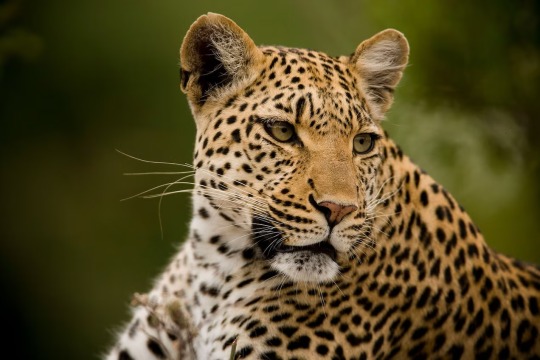
Portrait of a resting but alert leopard (Panthera pardus) on Chiefs Island, in Botswana's Okavango Delta 🇧🇼. Photograph By Beverley Joubert

A giant panda plays in the treetops inside an enclosure at the Wolong Giant Panda Research Center, China 🇨🇳. Photograph By Ami Vitale
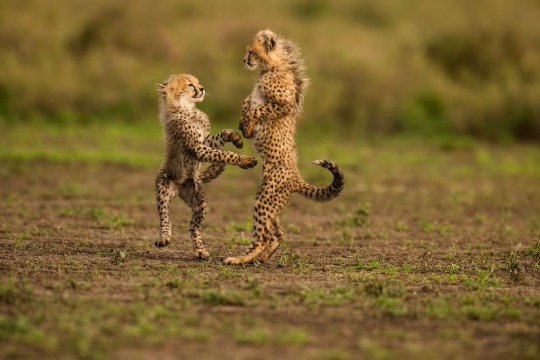
Cheetah cubs at play in Serengeti National Park, Tanzania 🇹🇿. Photograph By Frans Lanting

A Polar bear mother and her cub on the move in Hudson Bay, Canada 🇨🇦. Photograph By Frans Lanting
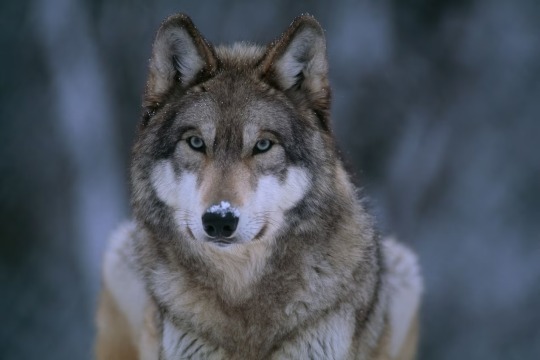
A Gray Wolf (Canis lupus) in the snow. Wolves are the only species among the top 10 most charismatic animals that are not globally threatened. Photograph By Joel Sartore

Mountain gorillas rest on high-elevation slopes of Mount Karisimbi, Rwanda 🇷🇼. Photograph By Ronan Donovan
0 notes
Text
Manitoba
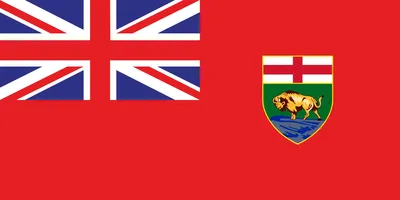
Manitoba is a province located in central Canada, known for its diverse landscapes, multiculturalism and rich history. It is home to many Indigenous communities and has a vibrant culture with a mix of European, Asian and Indigenous influences.
The name Manitoba comes from the Cree word "Manitou-wapow," meaning "the narrows of the Great Spirit," referring to the Lake Manitoba and Lake Winnipegosis region. The region was originally inhabited by Indigenous peoples for thousands of years before European contact in the 17th century.
The province has a fascinating history that includes the fur trade, the arrival of the first European settlers, as well as tensions between Indigenous peoples and Europeans. Today, Manitoba continues to evolve economically, socially and environmentally, and attracts tourists from all over the world.
Manitoba's geography includes the Canadian Shield, the Prairies, and the Hudson Bay Lowlands. The province is home to many species of wildlife, including polar bears, wolves, caribou and moose. the province produces large amounts of hydroelectric power from its many lakes and rivers, powering much of Canada's industry.
The climate in Manitoba varies depending on the region. The southern area experiences humid continental climate, while the northern region has a subarctic climate with short, cool summers and long winters. Manitobans enjoy many outdoor activities such as fishing, hunting, skiing, and snowmobiling in the wintertime.
The people of Manitoba are diverse and welcoming, with a mix of English, French, and Indigenous languages spoken throughout the province. The population has increased in recent years, largely due to immigration, making the province one of the most diverse in Canada.
If you're planning a visit to Manitoba, you'll find that there is an abundance of cultural and recreational activities, major cities and towns with friendly locals, and a variety of delicious cuisine. Manitoba is a great place to visit, live or work, and is a beacon of hope for all who strive to maintain the balance between economic progress and environmental stewardship.
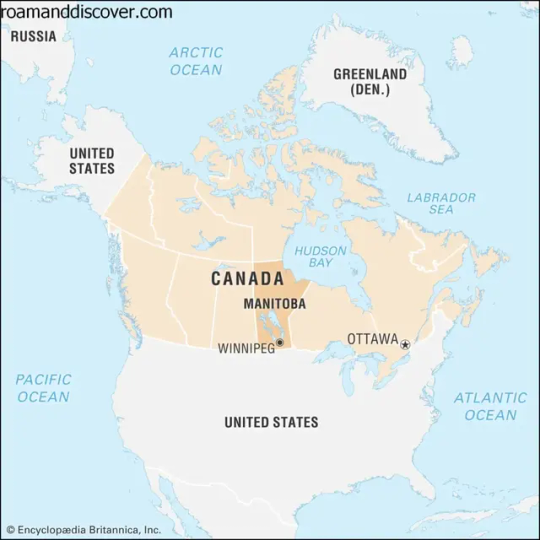
Etymology in Manitoba
Manitoba is a province located in the heart of Canada, with a history that dates back thousands of years. The name "Manitoba" has an interesting origin and meaning behind it. It is derived from two words, "Manitou" and "Waba", which are derived from the languages of the Indigenous peoples who inhabited the region. The word "Manitou" translates to "the Great Spirit" or "the Creator Spirit", while "Waba" means "the Narrows" or "the Strait".
The origin of the name Manitoba can be traced back to the Cree and Ojibwe languages, which were spoken by the Indigenous peoples who lived in the region. The name was first recorded in 1688 on a French map of the Great Lakes region, and it was used to refer to the area around Lake Manitoba and Lake Winnipegosis.
The name "Manitoba" also has a rich cultural and historical significance for the Indigenous peoples of the region. The Great Spirit referred to in the name is an important figure in their spiritual beliefs, and the Narrows or Strait connects two important bodies of water, Lake Manitoba and Lake Winnipeg.
Today, Manitoba is known as the "Keystone of the West" and continues to honor its Indigenous heritage through its many cultural events and festivals. The name Manitoba represents the diverse and rich history of the province, and it is a symbol of the connection between the past, present, and future of the region.
History in Manitoba
Manitoba has a rich and diverse history, shaped by both Indigenous and European influences. The area that is now Manitoba has a long history of human habitation, with evidence of Indigenous peoples dating back over 8,000 years.
European exploration and settlement in the region began in the 17th century, with the arrival of French fur traders and French-speaking Métis people. British control of the area began in 1763 with the Treaty of Paris, which ceded much of what is now Canada to Britain.
The Red River Colony was established in 1811, and over the years it became an important hub for fur trading and agriculture. In 1869, a group of Métis people led by Louis Riel rebelled against the Canadian government, resulting in the establishment of the province of Manitoba in 1870.
The early years of Manitoba's history were marked by conflict between the predominantly English-speaking newcomers and the French-speaking Métis population, who felt that their rights and culture were being threatened by the influx of settlers from Eastern Canada. This conflict came to a head in 1885 with the North-West Rebellion, which was met with a strong military response from the Canadian government.
In the years that followed, Manitoba became a province in its own right, and its economy began to grow and diversify. It became known for its agricultural production, particularly wheat and other cereal crops, and its rich reserves of minerals and other natural resources.
Today, Manitoba continues to be a thriving and dynamic province, with a rich and diverse cultural heritage that reflects both its Indigenous and European roots. Its vibrant arts scene, excellent healthcare system, and strong economy make it an attractive destination for people from all over the world.
Indigenous history in Manitoba
Indigenous peoples have a long and rich history in the region now known as Manitoba. The province is home to many First Nations, Inuit, and Métis communities, each with their own unique culture and traditions.
Manitoba's Indigenous history dates back thousands of years. The first peoples to settle in the area were nomadic hunters and gatherers who migrated across the Bering Strait and down through North America. These early peoples made use of Manitoba's land and natural resources to survive and thrive.
Over time, Indigenous communities in Manitoba developed complex societies and cultures. They established trade networks and formed alliances with neighboring nations. They also created sophisticated art forms, such as beadwork, quillwork, and birch bark biting.
The arrival of Europeans in the 17th century had a profound impact on Indigenous peoples and their way of life. Europeans brought with them diseases like smallpox, which devastated Indigenous populations. They also introduced new technologies, such as firearms and metal tools, which changed the dynamics of hunting and warfare.
Despite these challenges, Indigenous communities in Manitoba persisted. They adapted to the changing world and continued to hold onto their culture and traditions. Today, many Indigenous communities in Manitoba are actively working to preserve their language, art, and heritage.
One example of this is the Manitoba Indigenous Cultural Education Centre, which provides programs and services that promote Indigenous history, culture, and language. The centre works to increase understanding and appreciation of Indigenous peoples among non-Indigenous people in Manitoba.
In recent years, there has also been a growing movement to recognize and address the legacy of residential schools in Manitoba and across Canada. Residential schools were government-funded and church-run institutions that were designed to forcibly assimilate Indigenous children into European culture. The schools operated from the 1870s until the 1990s and had a devastating impact on Indigenous communities. Many survivors of residential schools have spoken out about the abuse they endured and the long-term effects it had on their families and communities.
Today, Manitoba's Indigenous peoples continue to play an important role in the province's cultural fabric. They have made significant contributions to the arts, literature, and sports, and continue to work towards greater recognition and respect for their rights and heritage.
European colonization in Manitoba
European colonization in Manitoba began in the 17th century when French fur traders arrived in the region. Through the fur trade, the French established relationships with Indigenous peoples, trading goods for furs. Eventually, the Hudson's Bay Company gained control of the region, leading to increased European influence and settlement.
The impact of European exploration and settlement on the region was significant. The arrival of Europeans brought new diseases that had devastating effects on Indigenous populations. The loss of life and culture cannot be understated.
As settlement increased, the fur trade began to decline in Manitoba. This led to the development of other industries, such as agriculture and mining. The construction of railroads and the development of transportation systems facilitated the growth of these industries.
However, the growth of European settlement in Manitoba was not without conflict. The Métis, a mixed-race group of Indigenous and European ancestry, faced discrimination and marginalization. This culminated in the Red River Rebellion in 1869-70, a significant event in Manitoba's history that led to the province's formation in 1870.
The impact of European colonization on Manitoba's culture and land is still felt today, with ongoing efforts by Indigenous peoples to reclaim their land and protect their culture. Manitoba is also home to various historical sites related to European colonization, such as the Lower Fort Garry National Historic Site, a former trading post and military fort established by the Hudson's Bay Company.
the impact of European exploration and settlement on Manitoba's history is complex and multifaceted. While it brought new industries and economic growth, it also had devastating effects on Indigenous populations and their way of life. Understanding this history is crucial to understanding Manitoba's culture and identity today.
Geology in Manitoba
Manitoba's geology consists of a mixture of ancient rocks and overlying sediments. The province has three main geological regions: the Canadian Shield, the Hudson Bay Lowland, and the Interior Plains.
The Canadian Shield, occupying the northeastern part of Manitoba, is an ancient mountain range consisting of igneous and metamorphic rocks that are over two billion years old. This region is rich in minerals and contains important deposits of copper, nickel, gold, and silver.
The Hudson Bay Lowland, located in the north-east corner of the province, is a flat, marshy region with low-lying valleys and rolling hills that was shaped by glaciers during the last ice age. This region contains vast peatlands, which are important for carbon sequestration and wildlife habitats.
The Interior Plains, extending across most of Manitoba, is characterized by flat to gently rolling hills and fertile agricultural land. This region consists of layers of sedimentary rocks deposited by ancient seas and contains important oil and gas deposits.
Manitoba's natural resources include minerals, oil, natural gas, timber, and hydroelectric potential. Mining is an important industry in the province, with companies extracting nickel, copper, and zinc from the Shield region. The oil and gas industry is also prominent, with discoveries of oil in southwestern Manitoba and natural gas in the southern part of the province.
Forestry is a significant industry in the Interlake region, where companies harvest softwood trees mainly for use in pulp and paper production. Manitoba's abundant water resources provide a source of hydroelectric power, with several hydroelectric dams located throughout the province.
- Manitoba's mineral resources:
- Copper
- Nickel
- Gold
- Silver
- Manitoba's oil and gas resources:
- Oil in southwestern Manitoba
- Natural gas in the southern part of the province
- Manitoba's forestry resources:
- Softwood trees primarily for pulp and paper production
- Manitoba's hydroelectric resources:
- Several hydroelectric dams located throughout the province
Manitoba's geology is diverse and provides significant economic benefits to the province through its vast mineral and natural resources. The Canadian Shield, Hudson Bay Lowland, and Interior Plains each have their unique geological makeup and natural resources, contributing to the province's rich landscape and economic prosperity.
Geography in Manitoba
Manitoba is a province located in the heart of Canada, bordered by Ontario to the east and Saskatchewan to the west. Its northern boundary is the 60th parallel, which it shares with the Northwest Territories. The province covers a total area of 649,950 sq. km.
The terrain in Manitoba is quite varied. The province is generally flat and featureless, with pockets of rolling hills and escarpments. The northeastern part of the province is dotted with lakes and boreal forests, while the south is predominantly covered in prairie grasslands. Manitoba is also home to several major rivers, including the Red, Assiniboine, and Winnipeg rivers.
One of the most notable landforms in Manitoba is the Manitoba Escarpment, which separates the province's southern prairies from the boreal forests to the north. The escarpment runs from western Manitoba into Minnesota and North Dakota.
Manitoba is also home to several major lakes, including Lake Winnipeg, which is one of the largest freshwater lakes in the world. The province also boasts several smaller lakes and reservoirs, including Lake Manitoba and Lake Winnipegosis.
The province's location in the center of North America has made it an important transportation hub. Several major highways and railways run through Manitoba, connecting the province with other parts of Canada and the United States.
Manitoba's geography is diverse and fascinating, with something to offer for everyone. Whether you are interested in exploring the prairies, boreal forests, or lakes and rivers of the province, Manitoba truly has it all.
Ecology in Manitoba
Manitoba is home to a diverse array of flora and fauna, with a number of unique habitats and ecosystems that support a wide variety of plant and animal life. From boreal forests to grasslands, wetlands to tundra, the province is home to a range of ecosystems that support different types of life.
The boreal forest, which covers a significant portion of the province, is home to a number of tree species including black spruce, jack pine, and balsam fir. This forest is also home to a variety of wildlife, such as moose, caribou, and black bears.
The grasslands in southern Manitoba are home to some of the rarest and most endangered species in Canada, including the chorus frog, the loggerhead shrike, and the burrowing owl. These regions are also important habitats for prairie grasses, which play a critical role in preventing soil erosion and maintaining healthy soil ecosystems.
Wetlands are another important ecosystem in Manitoba, accounting for roughly 15% of the province's land area. These areas serve as crucial habitat for a wide range of waterfowl, such as ducks and geese, as well as other species like beavers and otters. They are also important for cleaning and storing water, and for mitigating the effects of floods.
The tundra in Manitoba's far north is characterized by harsh weather conditions and rugged terrain, but is nevertheless home to a number of native species such as lemmings, Arctic foxes, and polar bears.
Manitoba's waters are also teeming with life, supporting fish populations such as walleye, northern pike, and lake trout. The province is also home to a number of species of turtles, frogs, and salamanders.
Manitoba is a rich and diverse province when it comes to its ecology, and is home to many species of plants and animals that cannot be found anywhere else in Canada.
Biodiversity in Manitoba
Manitoba is home to a diverse array of plant and animal species, thanks to its wide range of habitats. From the boreal forest in the north to the prairie grasslands in the south, there is an abundance of flora and fauna to explore.
The province is home to over 320 bird species, including the iconic bald eagle and the great gray owl. Manitoba's waterways are also home to many species of fish, such as walleye, northern pike, and lake trout. In addition, the province has many wetlands, which serve as important habitats for waterfowl and other water-loving species.
On land, the province is home to many mammals, such as the black bear, moose, and beaver. Manitoba is also home to many species of reptiles and amphibians, including the western painted turtle and the northern leopard frog.
The province's flora is just as diverse, with over 1,400 species of plants. The boreal forest is home to many species of coniferous trees, such as spruce and pine, while the grasslands are dominated by prairie grasses and wildflowers, such as the iconic purple prairie clover.
Manitoba's biodiversity is not only important for its own sake, but also for the health of the region's ecosystems and the services they provide. Wetlands, for example, help to filter water and prevent flooding, while forests play an important role in storing carbon and mitigating climate change.
The province has several protected areas, such as Riding Mountain National Park, that are dedicated to conserving Manitoba's diverse ecosystems and the species that inhabit them. These areas provide opportunities for visitors to appreciate and learn about the province's natural wonders.
If you're interested in learning more about Manitoba's biodiversity, you may want to check out some of the province's nature reserves or parks. The Oak Hammock Marsh Interpretive Centre, for example, offers educational programs and exhibits about wetlands, while the Manitoba Museum has many exhibits about the province's flora and fauna.
Manitoba's biodiversity is a rich and fascinating subject, with many species of plants and animals to discover. Whether you're an avid nature enthusiast or just starting to explore the province's natural wonders, there is something for everyone to appreciate.

Moose
Climate in Manitoba
Manitoba has a continental climate characterized by cold winters and warm summers. The province experiences a wide range of temperatures throughout the year. On average, temperatures can dip down to -20°C (-4°F) in winter and rise to 25°C (77°F) in summer. The variation in temperature is due to Manitoba's location in the center of the North American continent and its distance from large bodies of water.
Winter in Manitoba can last around six months and is known for its frigid temperatures. During winter, the province experiences heavy snowfall which can lead to snowdrifts and icy conditions. The annual snowfall averages around 1.2 meters (4 feet). While winter can be bleak and harsh, it also provides ample opportunities for winter sports like skiing, snowshoeing, snowmobiling, and ice fishing.
Summer in Manitoba can be hot and humid with temperatures ranging from 20°C (68°F) to 30°C (86°F). In the summer, the daylight hours are longer, providing ample time for outdoor activities such as hiking, camping, fishing, and boating.
Read the full article
1 note
·
View note
Text
Really want to know how ppl can tell the difference between arctic ans hudson bay wolves bt. I see a white wolf and im clueless
0 notes
Text
The Tenderness of Wolves by Stef Penney
A glimpse of the fading days of the dominance of the Hudson's Bay Company, woven into a gripping tale of murder, lust and individual courage
If I write a debut novel, I want it to be as good as this one. Stef Penney’s tale of Laurent Jammet and his unexpected murder leads us, through two different perspectives, into a stark world of rivalry and greed, addiction and control, wilderness and downfall.
I have to say that I was very taken with this book. The subject matter always appeals to me – the hardness of life in the days of…

View On WordPress
#Adventure story#Book Review#British fiction#Canadian Fiction#costa book award#Good read#Historical fiction#Rachel Deeming#scuffed granny#Scuffed Granny Reviews#stef penney#the tenderness of wolves
0 notes
Text

Iofur the Nature Planet Hudson Bay wolf. This one is different from all other Nature Planet wolves in that it has a unique color, size (being in between their medium and large-sized wolves) and and is exclusively sold at a Dutch zoo called Artis. Bought in their webshop in 2021.
This is also one of the rare occasions of a "white" wolf plush that isn't all white, but rather cream with a white stomach. I really appreciate this detail. Overall he's super cute and I'm happy to be able to obtain this unique Nature Planet plush.
1 note
·
View note
Photo
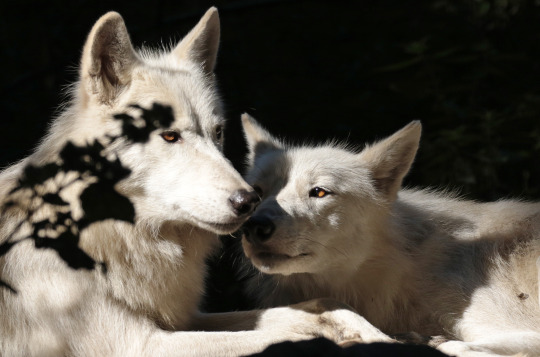


Pictures by safi kok
#wolf#wolves#naturel#wildlife#canidae#affection#affectionate#couple#pair#white#white wolf#white wolves#hudson bay wolf#hudson bay wolves#canis lupus hudsonicus#cuddling#cute
45K notes
·
View notes
Text
Hate it when I'm at the zoo and the animals are labeled like "gray wolf (canis lupus)" or "lion (panthera leo)".
No shit that's a wolf and a lion, I wanna know what exact subspecies you're presenting. I've only seen a few zoos where (in this case the example of the wolves and lions) had their subspecies is actually indicated. Like "Hudson Bay wolf" or "Barbary lion". Zoos are supposed to have an educational aspect and I love learning about different subspecies, so it's a missed opportunity to not add them on the signs.
2 notes
·
View notes
Photo
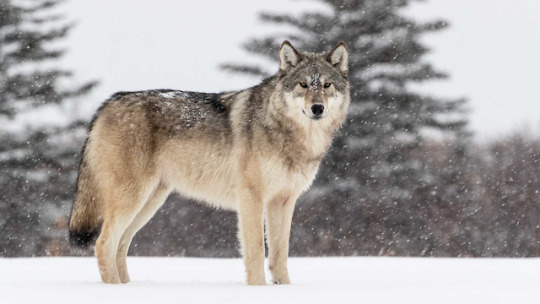





A rare look at a polar bear being chased by a wolf in Canada
British Wildlife photographer Russell Millner captured the astounding chase between a polar bear and a wolf at Nanuk Polar Bear Lodge on the Hudson Bay coast in Canada.
Polar bears are generally considered apex predators and rarely afraid of any animals in the Arctic region. However, this wolf seems to have the guts to fight the polar bear and defend its territory.
Although this is a rare scene, scientists have seen evidence of a pack of wolves hunting polar bear cubs before by tracing their tracks in the snow. Normally, some wolves would distract the mother polar bear away from the den, while another takes the cub away.
Source
5K notes
·
View notes
Photo

61 notes
·
View notes